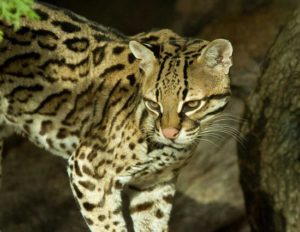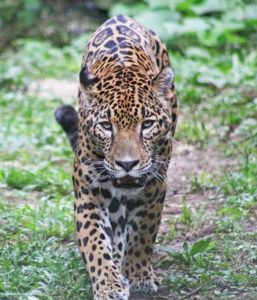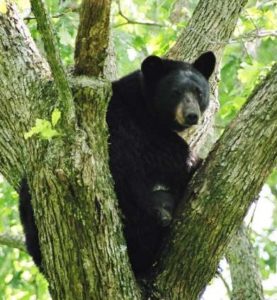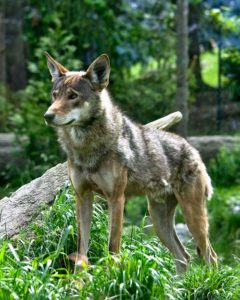Wildlife Wednesday: Lost Animals of the Coastal Prairie
There was a time, before European settlement of this part of Texas, when the area in and around the nature center would have been tall grass prairie as far as you looked. Most tall trees would have occurred on a few raised areas or along the banks of bayous. Today, 99% of this ecosystem is gone, and along with it, many of the animals that once inhabited this region. Though you may know that large herds of American Bison once roamed this area, and that morning bird song would have been deafeningly loud, you may not know about some of the predators that once prowled the tall grasses of our Coastal Prairies. Today, we’ll have a look at 4 lost species.
 While most people think of Ocelots (Leopardus pardalis) as creatures of Central and South American rainforests, these medium sized predators actually inhabit a variety of habitats, including deserts and grasslands, and once roamed our prairies. Today we have an extremely small population of possibly around 50 in the Southern tip of Texas, but they once ranged up the Texas coast all the way to Easternmost Louisiana. These spotted cats were driven to extinction in the state through overhunting and destruction of habitat, but have been reestablished in in the Lower Rio Grande Valley through conservation efforts by landowners, environmental groups, and government agencies, like the U.S. Fish & Wildlife Service.
While most people think of Ocelots (Leopardus pardalis) as creatures of Central and South American rainforests, these medium sized predators actually inhabit a variety of habitats, including deserts and grasslands, and once roamed our prairies. Today we have an extremely small population of possibly around 50 in the Southern tip of Texas, but they once ranged up the Texas coast all the way to Easternmost Louisiana. These spotted cats were driven to extinction in the state through overhunting and destruction of habitat, but have been reestablished in in the Lower Rio Grande Valley through conservation efforts by landowners, environmental groups, and government agencies, like the U.S. Fish & Wildlife Service.

Jaguars (Panthera onca) are another rainforest cat that is actually more variable than many people realize, and may live in a variety of ecosystems, beyond just rainforest. Like ocelots, jaguars once ranged our prairies and bottomland hardwood forests along the gulf coastal part of the state to the Eastern edge of Louisiana. Jaguars were killed off in Texas in the early 1900s, and have not returned to the state since, but they are slowly reestablishing themselves in Southern Arizona. These large powerful predators need a lot of land to roam in, and like ocelots, need to be able to roam back and forth across the border with Mexico, in order to maintain viable hunting grounds and territories.
 Louisiana Black Bears (Ursus americanus luteolus) used to range all through East Texas and down the Gulf Coast to Northern Mexico. By the early 1900s, this subspecies of the Black Bear had been made extinct in the state of Texas through overhunting and destruction of habitat. Over the last few decades, conservation and reintroduction efforts in Louisiana have increased the numbers of these endangered bears, and they are slowly reappearing in East Texas forests. We have also recently seen Mexican Black Bears reintroducing themselves into West Texas, in and around the Big Bend area.
Louisiana Black Bears (Ursus americanus luteolus) used to range all through East Texas and down the Gulf Coast to Northern Mexico. By the early 1900s, this subspecies of the Black Bear had been made extinct in the state of Texas through overhunting and destruction of habitat. Over the last few decades, conservation and reintroduction efforts in Louisiana have increased the numbers of these endangered bears, and they are slowly reappearing in East Texas forests. We have also recently seen Mexican Black Bears reintroducing themselves into West Texas, in and around the Big Bend area.
Though we are accustomed to seeing coyotes in this part of Texas, historically, they ranged much further to the West of us, and our native wild dog in this region of Texas was the Red Wolf (Canis rufus). These critically endangered predators were not only hunted to extinction in the state of Texas, but are almost functionally extinct in the wild, only living in parts of the Southeastern U.S. with help from conservation organizations and government agencies. It is not clear that this species will be able to escape total extinction in the wild, as they still face extreme pressure from poaching and habitat degradation in the few areas in which they still occur outside of zoos and assurance colonies.
While its a bit sad to think about, its important to know what we’ve lost, and what we could have again, if we wanted to reestablish our native ecosystems to a more historically natural state. Well, I hope you enjoyed our brief look at a few species we once had roaming the land that the Nature Center now occupies.
Thanks for joining us, and see you soon!
Eric Duran
Staff Naturalist
photographs via: U.S. Fish & Wildlife Service and Jesse McCarty | Flickr CC



